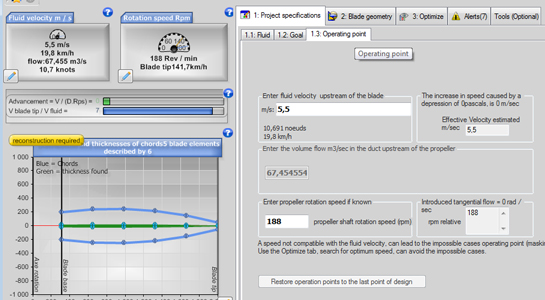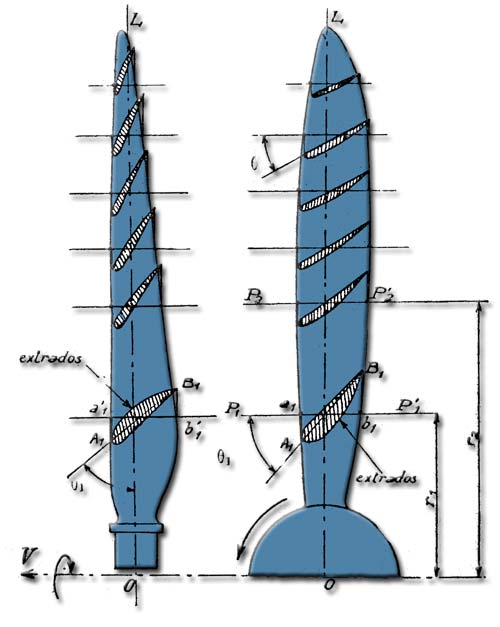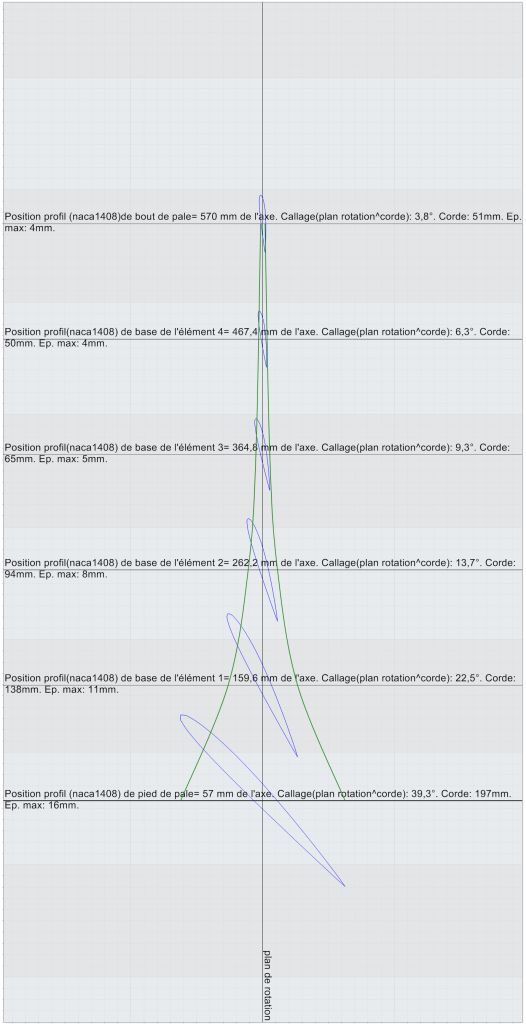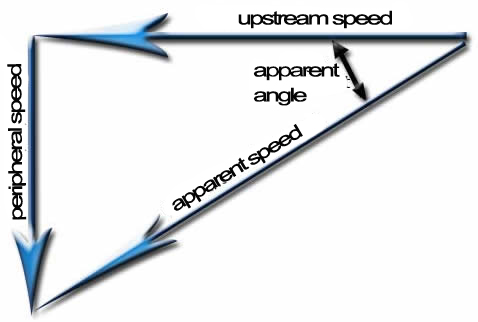understand and master the Operating point of the propeller or turbine:
This is on the tab 2.1: Operating point of the propeller, that you enter the operating data. Fluid velocity (or from the vehicle) and the desired rotational speed (if known).

The peripheral speed in m / sec at a point on the blade, is equal to the perimeter of the circle on which the point is observedmultiplied by the number of revolutions / second. If you look at the blade by Elements, we find that for a same rotation speed (rev / sec),the linear velocity (m / seconds) of an element at the blade tip, is much higher than the speed of a portion close to the axis.The blade sections are generally shaped airfoils. The blade sections are profiles, and the portion between two profiles, are the elements of the blade.


Operating point of the propeller is determined by the rotational speed and the fluid velocity. The operating point therefore also determines the twist of the blade. A blade is twisted to have optimum angles for some operating point. If the operating point varies (rotational speed or fluid velocity), then the twisting of the blade is no longer optimum. In this case, the propeller oparate outside of its design point, in the off-design mode..See:


 Global site map
Global site map Mecaflux
Mecaflux Tutorials Mecaflux Pro3D
Tutorials Mecaflux Pro3D Tutorials Heliciel
Tutorials Heliciel Mecaflux Store
Mecaflux Store Compare software functions
Compare software functions Quotes, Orders, Payment Methods
Quotes, Orders, Payment Methods project technical studies
project technical studies